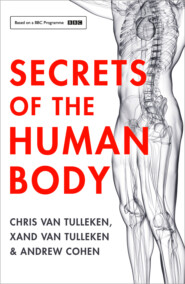По всем вопросам обращайтесь на: info@litportal.ru
(©) 2003-2024.
✖
Forces of Nature
Автор
Год написания книги
2019
Настройки чтения
Размер шрифта
Высота строк
Поля
Another of our recurring themes is a celebration of the energetic curiosity of the early scientists. There is a breathless lyricism in their descriptions of ideas that remains relevant and essential; yet their presentation seems somehow unencumbered by the more serious and confining demands of modern professional science. There are great writers from the modern era who capture the logic, clarity and wonder of science – Richard Feynman, Richard Dawkins and Carl Sagan spring immediately to mind – but there is something exhilarating in seeing science evolving in words. The limits of the Renaissance authors are so often coterminous with the limits of all human knowledge that the investigations on the page are near real-time explorations rather than reminiscences from a well-trodden intellectual road. Perhaps this is what gives the old masters’ writings such exhilarating intellectual pace.
Just as the force of gravity limits the maximum size of Earth’s mountains, so it limits the range of forms that natural selection can create, restricting the overall size of organisms that live on its surface. Four hundred years ago, Galileo Galilei explored the factors that define how big an animal can be; in common with Kepler and his snowflakes, he was operating at the edge of knowledge and ahead of his time. Discourses and Mathematical Demonstrations Relating to Two Sciences was Galileo’s final book, written whilst under house arrest and published in 1638 by the Dutch publisher Lodewijk Elzevir, because no country in the grip of the Inquisition would touch it. Any scientist reading this book will recognise the name: the Elsevier company, which took the publisher’s name, is today a leading scientific publisher. Galileo’s book is written in the style of a conversation between three men, Simplicio, Sagredo and Salviati, who each represent the author at a different age, and with a different level of knowledge. The characters wander from question to question during a conversation lasting four days, discussing and debating each subject before moving on to the next. The book has something of the voyeuristic pleasure of overhearing a conversation on a park bench – albeit in a park frequented by unusually thoughtful individuals. Galileo covers large swathes of the physics of the day, including a critical look at Aristotelian physics, accelerated motion, the motion of projectiles and the nature of infinity. His investigations also turned to the strength of materials and the limits placed on the size and form of structures, both animate and inanimate, by the laws of Nature.
From what has already been demonstrated, you can plainly see the impossibility of increasing the size of structures to vast dimensions, either in art or in Nature. Likewise the impossibility of building ships, palaces or temples of enormous size in such a way that their oars, yards, beams, iron-bolts and, in short, all their other parts will hold together. Nor can Nature produce trees of extraordinary size, because the branches would break under their own weight; so also it would be impossible to build up the bony structures of men, horses or other animals so as to hold together and perform their normal functions if these animals were to be increased enormously in height. For this increase in height can be accomplished only by employing a material which is harder and stronger than usual, or by enlarging the size of the bones, thus changing their shape until their form and appearance suggest a monstrosity.
Galileo states, for the first time, the relationship between volume and area, known today as the square–cube law; as an object grows in size, the volume grows faster than the surface area. Consider the example of a cube of sides measuring 2cm. The surface area is 6 x 2 x 2 = 24cm
. The volume is 2 x 2 x 2 = 8cm
. If we double the length of the sides, the surface area is 96cm
and the volume is 64cm
. Double the length of the sides again and the surface area increases to 384cm
whilst the volume is 512cm
. And so on.
This means that, as animals get larger, their volume, and therefore their mass, increases more rapidly than their surface area and the cross-sectional area of their bones. The consequence of this is that animals can’t simply be ‘scaled up’ in size. A mouse can’t be expanded to the size of an elephant because its skeleton would give way; that’s why an elephant has thicker legs relative to the rest of its body than a mouse. This ultimately places a fundamental limit on the maximum size of living things on land; the structural strength of bone, or wood in the case of trees, limits the mass of the organism in the same way that the structural strength of the rocks of the Earth’s crust limits the size of a mountain. On Mars, elephants could have thinner legs.
Galileo realised there was an exception to this rule. Whereas gravity imposes a limit to the size and shape of animals on land, the constraints placed on living things by physical laws are different in water. Marine animals float, which means the effects of gravity are not relevant. With the necessity for strong bones to support their weight removed, their forms are freed from this particular constraint. Here is how Simplicio, Sagredo and Salviati put it, from their metaphorical park bench. I can’t help but hear them as a sort of three-way Renaissance version of Pete and Dud…
Simplicio: This may be so; but I am led to doubt it on account of the enormous size reached by certain fish, such as the whale which, I understand, is ten times as large as an elephant; yet they all support themselves.
You read that in a Dagenham accent, didn’t you?
Simplicio: A very shrewd objection! And now, in reply, tell me whether you have ever seen fish stand motionless at will under water, neither descending to the bottom nor rising to the top, without the exertion of force by swimming?
Simplicio: In aquatic animals therefore circumstances are just reversed from what they are with land animals inasmuch as, in the latter, the bones sustain not only their own weight but also that of the flesh, while in the former it is the flesh which supports not only its own weight but also that of the bones. We must therefore cease to wonder why these enormously large animals inhabit the water rather than the land, that is to say, the air.
Sagredo: I am convinced and I only wish to add that what we call land animals ought really to be called air animals, seeing that they live in the air, are surrounded by air, and breathe air.
Salviati: I have enjoyed Simplicio’s discussion, including both the question raised and its answer. Moreover I can easily understand that one of these giant fish, if pulled ashore, would not perhaps sustain itself for any great length of time, but would be crushed under its own mass as soon as the connections between the bones gave way.
Freed from the tyranny of gravity, aquatic animals can be larger than their land-based cousins, but they don’t have complete freedom from the laws of physics.
Every winter the warm waters of Florida are home to one of Nature’s apparently less elegant shapes. The caveat is important, because the clumsy-looking manatee is as well adapted to its environment as the most aesthetically refined butterfly. The West Indian manatee is the largest living example in the Sirenia order of wholly aquatic, herbivorous mammals. A less-than-taxonomically accurate but nonetheless accurate image can be conjured by imagining a 4m-long aquatic cow with no legs, unhurriedly grazing on the sea grasses that grow in the slow-moving waterways along the Floridian coast.
During the summer months the manatee roam as far north as Massachusetts, but as the seasonal temperatures fall they must return to warmer seas. They are unable to survive in waters below 20 degrees Celsius for long. The need for warm winter waters drives the manatees to congregate in large groups around the warm springs that dot the Florida coast, where temperatures remain above 22 degrees Celsius all year round. They also take advantage of human activity, gathering in the outflows of power plants near Apollo Beach and Fort Myers. The manatee is a strange animal indeed; it is more closely related to an elephant than to the other marine mammals – they share a common ancestor around 60 million years ago, not long after the dinosaurs became extinct. The ancestor may have looked like the modern-day hyrax, which at around 50cm in length looks nothing like an elephant or a manatee; 60 million years is plenty of time for the un-directed tinkering sieve of natural selection to sculpt an animal to take advantage of an environmental niche.
The elephant’s niche is to be the biggest land animal, which undoubtedly gives it an advantage against predators, but it also displays the anatomical evidence of a tussle with gravity. As dictated by the square-cube law, the elephant has evolved with exceptionally thick legs to support its substantial weight. There is also the matter of cooling; heat escapes from an organism through its surface. As the volume of the animal increases, so does the amount of heat it generates, but its surface area decreases in proportion, according to the square-cube law. This presents a problem for a land-dwelling animal, and the elephant has solved it by developing an ingenious cooling system – its big ears.
The manatee filled a different niche. The transition from a coastal land-dweller to an aquatic mammal saw their front limbs evolve into flippers, although they still possess their ancient finger-bone structure and fingernails. The rear limbs have become a giant paddle-shaped caudal fin, a gradual evolutionary change wonderfully documented in the fossil record. The limbs of the ancient ancestor that grew thick to resist gravity in the elephant have become streamlined to allow the manatee to swim at up to 12 km/hour. The manatee can dive deep, for up to twenty minutes at a time, but being an air-breathing mammal it must surface for air eventually. Its time under water is maximised by slowing down its heartbeat and metabolic rate, reducing the need for oxygen; but this is where biology comes into conflict with physics. A low metabolic rate means limited heat production, and water is an extremely good conductor of heat away from the body, so there is a danger of becoming too cold. The compromise solutions discovered, naturally, by natural selection, are to get bigger, which reduces the surface-area-to-volume ratio and therefore decreases the rate of heat loss per unit volume, and to get spherical (see illustration, here (#ulink_c1685a93-e7a1-591f-804c-1b8acada6b91)).
This graph shows how the surface area decreases for rounder shapes and the surface-area-to-volume ratio decreases as the volume increases.
This is a beautiful example of a naturally occurring shape reflecting a deeper mathematical reality. The sphere is the three-dimensional shape with the lowest surface-area-to-volume ratio. If you want to generate lots of heat by having a large volume, but lose as little through your surface as possible, you’ll be spherical – and the manatee is the most spherical mammal on Earth. What a wonderful thing to be – unless you are an astronomer. The astronomer Fritz Zwicky is credited with calling a group of his colleagues Spherical Bastards, because they are bastards, whichever way you look at them. Which brings us nicely back to the subject of symmetry. If a physicist designed a manatee it would be spherically symmetric. Symmetrical shapes such as planets tend to be the result of the action of symmetrical laws of Nature, unless there are reasons for the symmetry to be broken. There are no perfectly symmetric large organisms in biology. Why?
Symmetry and symmetry breaking in biology (#ulink_4caf434e-1ed4-5aa2-870f-d680356943cd)
Leonardo da Vinci’s ‘Vitruvian Man’ is perhaps the most famous drawing of the human form in history. It depicts a man in two superimposed positions within a circle and a square. The proportions are carefully calculated in an attempt to represent the underlying perfection of Man and to link him directly to the Universe. Da Vinci was inspired by one of the great classical works, De architectura, written by the Roman architect Vitruvius. The relationship of the human form to a circle and square reflects ancient ideas – dating back to Plato, Pythagoras and earlier mystic traditions – which attempted to forge a link between Nature and geometry. Kepler’s early work on the motion of the planets was firmly rooted in this tradition, and he only jettisoned the idea that the motion of the planets could be described in terms of the perfect ‘Platonic’ solids when the data forced him to conclude that planets actually move in elliptical orbits rather than circular ones. It is interesting to reflect on the fact that the explanation for the motion of the planets is more elegant and beautiful than Kepler’s hoped-for geometrical perfection. As we’ve seen, the motion of all the planets and moons in the Solar System, and indeed every solar system in the Universe, can be described by the application of Newton’s laws of motion and Universal Gravitation; a profound simplification that would surely have appealed to Kepler, and to Plato before him, because Newton’s laws do embody a ‘perfect’ spherical symmetry, which is hidden but still evident in the structures it creates.
Вы ознакомились с фрагментом книги.
Приобретайте полный текст книги у нашего партнера:
Приобретайте полный текст книги у нашего партнера:










